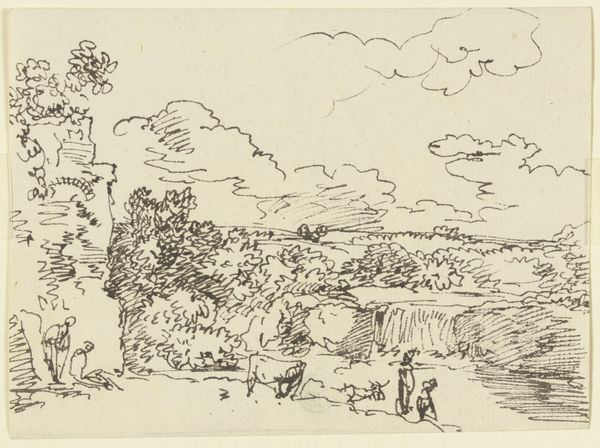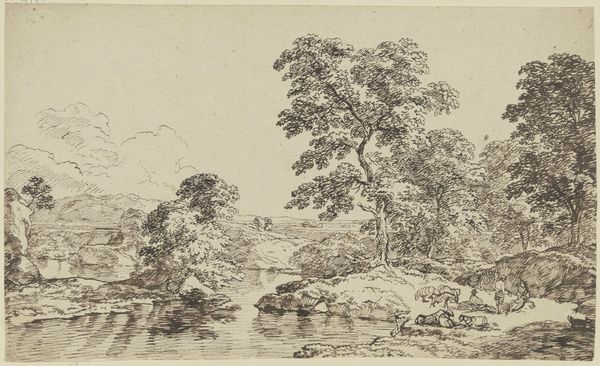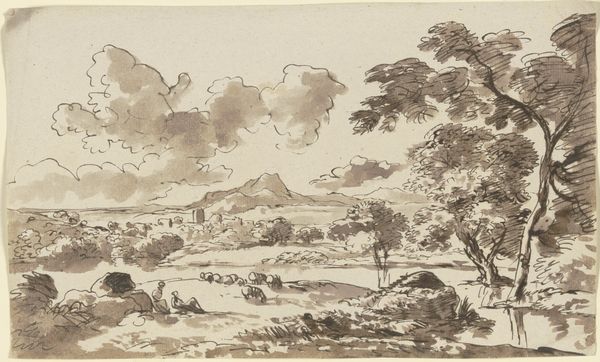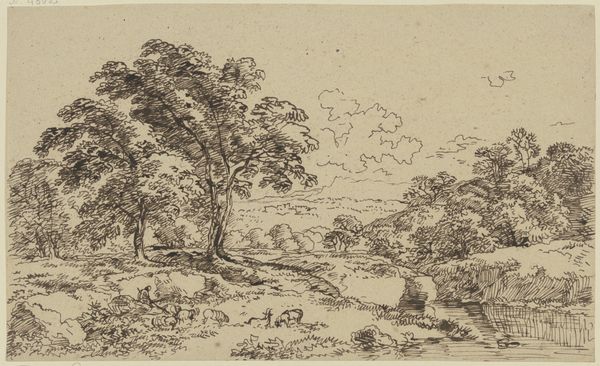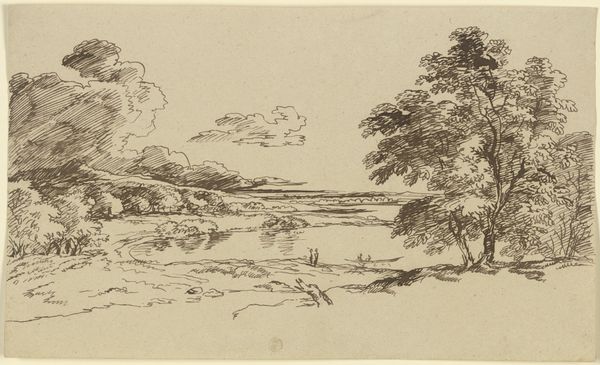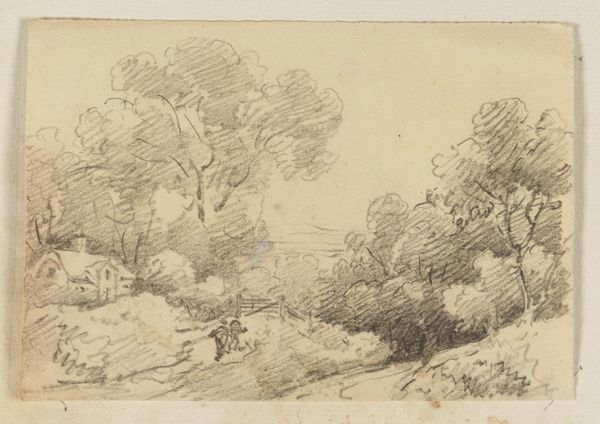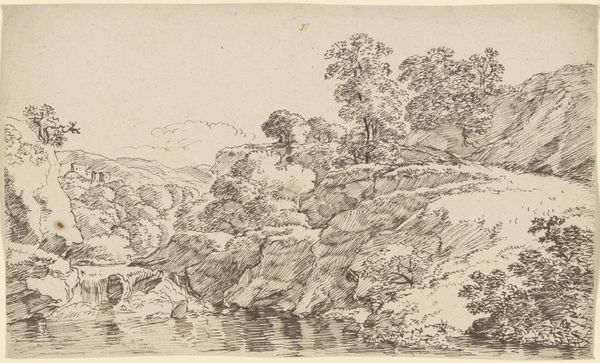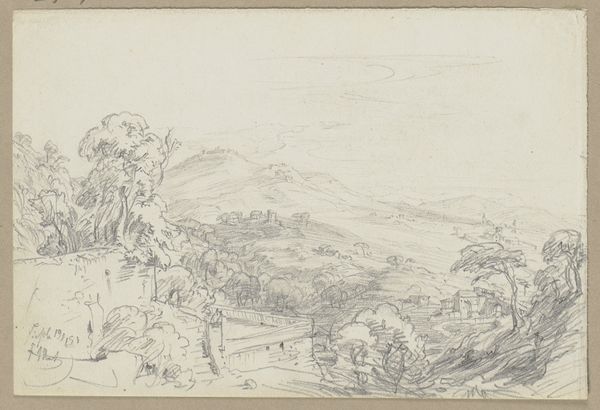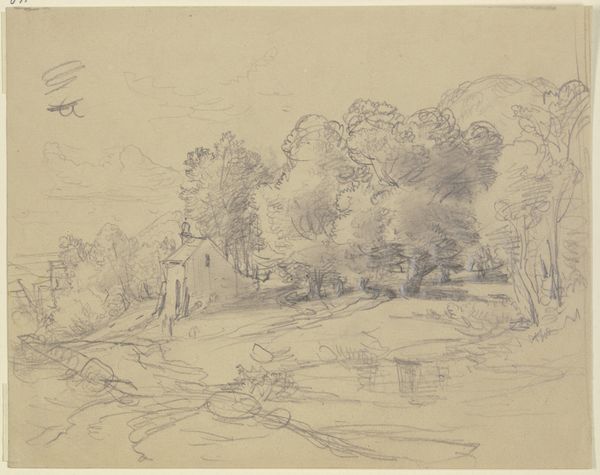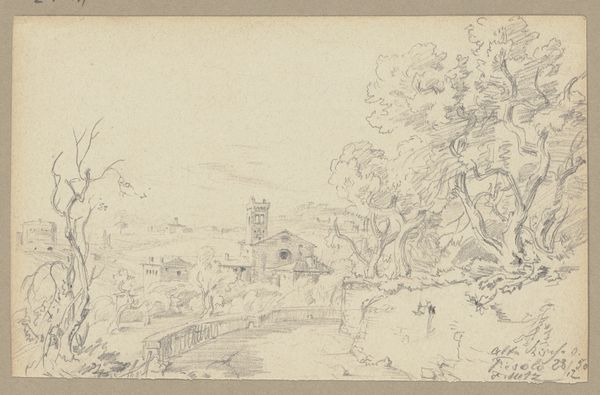
drawing, paper, fresco, ink, indian-ink, pencil, pen
#
drawing
#
ink drawing
#
pen sketch
#
pencil sketch
#
landscape
#
paper
#
fresco
#
11_renaissance
#
ink
#
sketch
#
indian-ink
#
pencil
#
pen
#
italian-renaissance
Copyright: Public Domain
Curator: Immediately, I'm struck by how light and airy this landscape feels. The artist, Franz Kobell, really captured a sense of peace and tranquility here. Editor: I see a society steeped in the remnants of former structures, suggesting narratives of decline, but also continuous habitation, challenging our assumptions about linear progress. Let’s explore "Gebirgslandschaft mit antiken Ruinen und Staffagefiguren" with this in mind. The title alone offers a portal into how landscapes and architecture intersect with social structures. Curator: Absolutely. It’s interesting to consider that it’s executed using pen, pencil and Indian ink on paper. This method provides incredible immediacy. The contrast between the delicate drawing on humble material like paper and its imposing subject matter - classical ruins in a landscape - highlights, to me, the transience of power. Editor: This landscape seems to serve as a stage for people carrying goods. Note that labor within the framework of idyllic pastoral scenes softens the raw truth. This is more than just nature; this work portrays land shaped by complex negotiations between civilization, power, labor, and those who move within the spaces. Curator: The sketch-like quality leads us to a close reading. Kobell gives us details like the clothing on the seated figure but quickly turns the focus to the broader scenery, from the distant mountains to the textures found on ruins and throughout tree foliage. This approach shows his mastery of using minimal materials to produce maximum depth. Editor: Thinking about the function of landscape art during this period reveals this composition’s purpose. Landownership and agrarian reforms shifted traditional roles and systems. By choosing to depict a scene populated with workers amid crumbling monuments, Kobell places us firmly at the nexus of nostalgia, contemporary struggles, and questions of historical memory. How were class dynamics, environmental awareness, and identity all interwoven in that time period? Curator: I feel what you have raised is important here, that perhaps he's looking to showcase an active society amongst those who have since come and gone and left relics behind, making space for discussions about societal development and production methods across many periods in a small snapshot. Editor: The artist gives the audience ample evidence to continue unpacking its historical context, as it creates room to explore further what this composition tells us about our changing roles. Thank you for unveiling these complexities of materials!
Comments
No comments
Be the first to comment and join the conversation on the ultimate creative platform.
